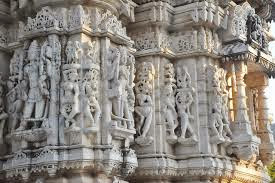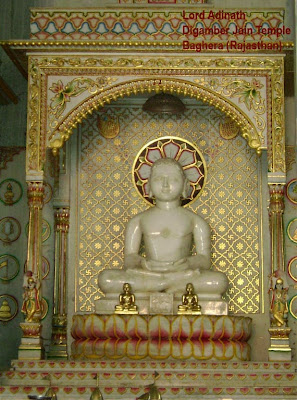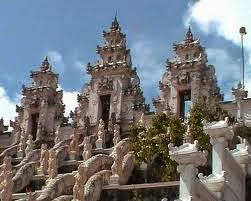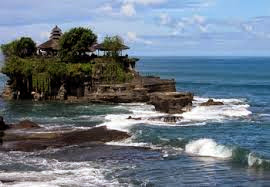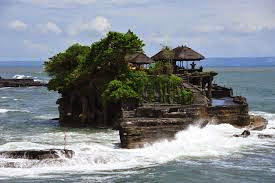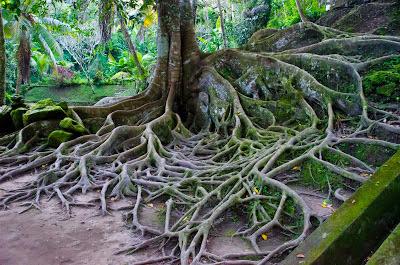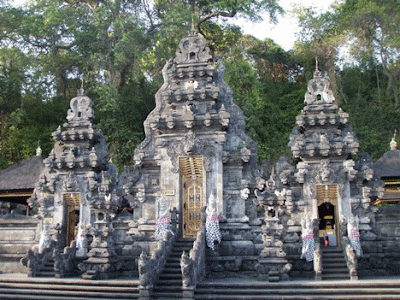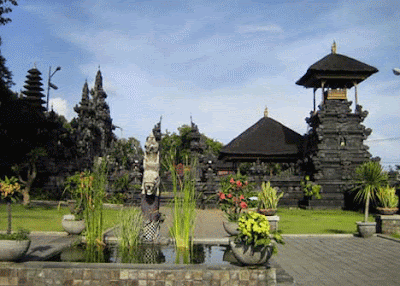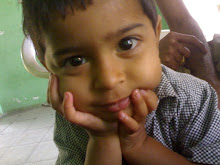 <br>
<br>Lord Shiva, also known as Dhakshinamurthy, who spreads the Universal Truth not by words but by his silence and by his sign of his hand which is held in the form of "Chin Mudra".
About 2500 years ago, when the spiritualisation of the people greatly reduced, all the Gods and the Rishis went to Kailash and pleaded with Lord Shiva to revive the world. Lord Shiva agreed with their request and informed that he will be born in this world. Lord Brahma, Indra and others also agreed to be born in this world to help Lord Shiva. In Kaladi, Kerala, a learned brahmin, by the name of Sivaguru, and his wife, Aryambal, spent their life in pooja and in giving alms to poor and in other good deeds. This childless couple went to Trichur and performed puja for 48 days to Lord Vadakkunathan (Lord Shiva) and prayed for a son. Lord Shiva melted in their devotion and appeared before them and told them "I am extremely happy with your devotion and you will get what you want. But tell me whether you want a number of dull children or a son who is extremely intelligent, who will live for a short period only." The couple replied the decision could not be theirs as the Lord knows what is good for them.
Lord Dakshinamurthy, pleased with the reply, was born to Aryambal under the star "Thiruvaithhirai". As the Lord had already promised that he will be born to do good to this world, the child was named Sankara. Sam means prosperity and Karathi means te giver. All the visitors stood in awe at the divinity of the child and said "This is not an ordinary child".
As Shankara grew up, he attraced everybody with his intelligence and kindness. At the age of three, he was given "Aksharabyas", i.e., the learning of writing and reading. At the age of four, he lost his father. At the age of five, he was initiated in Brahmacharyam i.e., the holy thread ceremony was conducted and he was sent to Gurukul for learning of scriptures. As per the practice the brahmachari has to go from house to house and take alms and submit this to his guru. On a Dwadasi day Sankara happened to go to the house of a very poor lady jand asked for the alms. The lady did not have a single grain of rice in her house to give. However she had kept a single Amla fruit for herself as it was a Dwadasi day. She unhesitatingly gave this Amla fruit to Sankara as she could not send a Brahmachari empty handed. Sankara was moved by her selflessness and the poverty of the lady and prayed to Goddess Lakshmi in a beautiful sloka which is called "Kanaka Dhara Stotram". On completion of this stotram, Goddess Lakshmi appeared in person and showered a rain of golden coins on the poor lady's house.
One day, the rishis came to him and reminded him of his duty to the land in spreading spiritualism. Sankara agreed it was time to become a Sanyasi and go all over the country to kindle religious ferver.
One day when Sankara was taking bath, a crocodile caught hold of his leg. Sankara called out to his mother. Aryambal came running and to her horror she found her son in the grip of the crocodile and she cried that se did not know how to help her son.
Sri Sankara informed his mother that his life was nearing to an end, but if he became a Sanyasi, he could start a new life as a sannyasi. Thus Sri Sankara obtained permission from his mother to become a sannyasi.
Sri Sankara went in the search of a Guru to be formally initiated as a Sannyasi. At the banks of the river Narmada, he found the river gushing forth into floods. By using his powers, he encapsulated the river in his Kamandal (a vessel sannyasi's carry) and released it in the banks of the river. Sri Govinda Bagawathpathar, an ascetic who saw this, marvelled at Sri Sankara dn took him on as a Shishya.
Sri Govinda Bagawathpadar taught various vedas to Sri Sankara. He also taught about Advaita, the principle that every one in this world is the manifestation of God and that God and Atman are one and the same. He advises Sri Sankara to go out in the world and spread this truth throughout the country.
Sri Sankara went to Kasi and by that time, he had a lot of disciples. One of them, Sanandhyaya, was drying the clothes of his Guru and suddenly Sri Sankara called him to the other bank of the river as he needed the clothes urgently. Sanandhyaya, little realising that he would drown, starts walking into the river. However, the Grace of his Guru resulted in a lotus materialising wherever he was keeping his foot. When asked as to how did he cross the river, he says that when his Guru calls, he is not to worry about anything. Sri Sankara named him as Padma Padar (lotus feet).
Once, in Kasi, when Sri Sankara was going to the Vishwanath Temple, his path was blocked by an "untouchable" who was accompanied by his wife and 4 dogs. The disciples of Sri Sankara shouted at him to make way, and to keep a distance. The untouchable smiled and said, ""According to your principle of Advaita, which you practice, all the Jivatma are same as God. How do you ask me to go? How am I different from your Paramacharya? What you say is unreasonable. How can I go away from myself?"
Sri Sankara realised that it was not an ordinary person and understood that it was Lord Shiva himself who had come along with His consort and the four Vedas. He prostrated before the Lord and sang five slokas called "Manisha Panchakam". Lord Shiva presented himself along with Visalakshi and blessed Sri Sankara.
When Shri Sankara was 16, a very old Brahmin of ill health started arguments with him about Brahmasutra bashyam which Shri Sankara had written. Shri Sankara was astounded by his intelligence and arguments but they continued their discussion. The arguments continued for days together and the more Shri Sankara argued, his ideas crystallised more and more and he understood that the old man was none other than Vyasa Rishi, who was the creator of Brahmasutra. Sri Sankara said that he has done a great disrespect to the sage by entering into an argument. Vyasa Rishi said "I fully agree with your bashyam and I wanted to establish that yours is correct. I bless that you should live another 16 years and you should spread this Advaita throughout the country." Sri Sankara learnt that there was a great learned person by the name Mandana Mishra who lived in Mahishmati and who followed the Karma Mimaamsa method of devotion. Sri Sankara arrived at his house and found his house was closed and Mandala Mishra was carrying out some rituals inside his house. Sri Sankara entered the house by using his powers and entered the house. Mandala Mishra became very angry and shouted at Sri Sankara. But Sri Sankara smiled and explained the uselessness of such rituals. However, Mandala Mishra admired the intelligence of Sri Sankara and started discussions with him after completing the rituals. Sri Sankara said that there should be a judge to decide the winner and suggested that Sarasawani, the wife of Mandala Mishra, to be the judge. Sarasawani, who was extremely intelligent and learned, realised that Sri Sankara was none other than Lord Shiva, did not want to declare her husband as the loser. She suggested that both of them should wear a garland of flowers and whichever garland fades first, that person would be the loser. Naturally, Sri Sankara won.
As per the original condition, Mandala Mishra became an ascetic and started to leave the house. Unable to bear the separation, Sarasawani stood transfixed and told Sri Sankara that according to our faith, the husband and wife, even though have two bodies, are spiritually one and she would be incomplete without her husband.
Sri Sankara accepted this and started discussion with this lady. Saraswani showered questions like rain and Sri Sankara gave very beautiful answers and Sarasawani acknowledged him, and followed Sri Sankara and her husband's footsteps. In their travels, they reached Sringeri in Karnataka, which is on the banks of Tungabadra. While Sri Sankara and Mandala Mishra were walking, Sarasawani did not move and stood fixed in the sands of Tungabadra. Sri Sankara turned back and realised by his divine powers that Sarasawani did not want to proceed any further and created a seat for her for spreading the Advaita. This seat is today called the Sharada Peetham or the Seat of Sharada. This was the first Mutt installed by Sri Sankara, with the direction that all the heads of the Mutts will be called Sankaracharayas and they will have a lineage of Shishyas or disciples.
When Sri Sankara was in Sringeri, he divined by his superior powers that his mother was in her deathbed, and as per his promise while taking Sanyas that he would be by her side while she breathes her last, he reached Kaladi and paid his last respects to the old lady. Aryambal was happy that her son had come back. Sri Sankara prayed to Lord Venkateswara who appeared in person and blessed Aryambal. Sri Sankara did the last rites for his mother but the people of Kaladi said that a Sanyasi does not have the right to do the last rites, but he did not hear that and carried the body of Aryambal and put her in the pyre himself and lit it himself.
When Sri Sankara was in Sringeri, he divined by his superior powers that his mother was in her deathbed, and as per his promise while taking Sanyas that he would be by her side while she breathes her last, he reached Kaladi and paid his last respects to the old lady. Aryambal was happy that her son had come back. Sri Sankara prayed to Lord Venkateswara who appeared in person and blessed Aryambal. Sri Sankara did the last rites for his mother but the people of Kaladi said that a Sanyasi does not have the right to do the last rites, but he did not hear that and carried the body of Aryambal and put her in the pyre himself and lit it himself.
Sri Sankara, with his three principle disciples, namely, Padmapadar, Sureshwarar (Mandala Mishra) and Hastaamalaka, went from place to place, and preached Advaita. Sri Sankara gave intense training to his disciples. One of the other disciples, Giri, while listening to the discourses, would not ask any doubts, would not open his mouth, and would be silent all the time. Some of the other disciples thought that this Giri was a dumb idiot and did not know anything. One day, all the disciples were ready to listen to Sri Sankara's discourses. Sri Sankara waited for Giri to arrive. Ultimately, Giri turned up but instead of keeping silent on that day, burst forth into eight slokas which had never been heard by the disciples earlier. These were the creation of Giri. On hearing this, all the disciples felt ashamed and praised Giri. These slokas are called "Thotaka ashtakam". Giri was named as Thotakar by Sri Sankara. Sri Sankara visited Thiruvidaimarudur in Tanjore district of Tamilnadu, which is a great religious place, and the ruling deity in the temple was Lord Shiva. The learned Saivites of the temple informed Sri Sankara that Lord Shiva is the creator and that they are all merely lowly life created by Lord Shiva, and if that was so, how does Sri Sankara say that they were one with the Lord ? They did not agree with the Advaita principle. Sri Sankara asked them to enter the temple. As they reached the Sanctum Santorum of the temple, their was a thunderous statement "Satyam is Advaita". This was repeated thrice and it was also followed by a hand which came out of the Linga which conformed the truth. All the learned persons acknowledged the principle of Advaita and accepted Sri Sankara as their Guru. Even today, there is a Sankara Mutt at Thiruvaimarudur and there is a linga with a hand materialising out of it. Sri Sankara visited Thiruvanaikar, near Trichy in Tamilnadu. In this temple, the Goddess Akhilandeswari was having a feirce power and people who went to have her darshan could not stand the fierceness of this Goddess. Sri Sankara created two sets of earrings which are called Tatankam and he presented these to the Goddess. The fierceness of the deity reduced. This tatankam, the earrings, has been maintained over time by the Acharyas of the Kanchi Mutt.
Sri Sankara visited Tirupathi and recited the Sloka "Vishnu pathathi keshanta stotra" which describes the Lord from his foot to the head. He wanted the people to visit the Lord in great numbers and get his blessings, he established an yantra. From that day the number of followers of the temple increased and is increasing day by day. Arjuna tree is the tree of "Marutha" and the place where Lord Shiva appears as a Linga under this "Martha" tree is called Arjuna Kshetra. The Thiruvadaimaruthur which Sri Sankara visited earlier is called Madhyaarjunam. Srisaila, in Andhra, is called Mallikarjunam as Lord Shiva resides under a Marutha Tree which has also got Jasmine creepers on this tree. Sri Sankara visited this tree and became ecstastic on seeing the linga at the foot of this tree. His happiness flowed like the waves of a flood and became a sloka called Sivanandalahiri.
Near Srisailam, there is a forest called Hatakeshwaram, that no man enters. Sri Sankara entered this place and did penance for many days. During this time, a Kabalika, by name Kirakashan appeared before him. Kapalikas are a set of people who live in the burial grounds and pray to God by giving human and animal sacrifice. They were against Advaita which preaches love and affection and shuns violence. He asked Sri Sankara that he should give his body as a human sacrifice to Lord Shiva. Sri Sankara was happy to hear this request and agreed. Kirakashan was about to cut off Sri Sankara's head when Lord Narasimha appeared in the form of a lion and killed Kirakashan.
Sri Sankara completed his travels and went to Badrinath. Lord Vishnu appeared before him and told that his sculpture in Alaknanda river should be taken out and a temple should be built for it. This temple is called Badrinarayan temple and is one of the important religious places for Hindus.

















